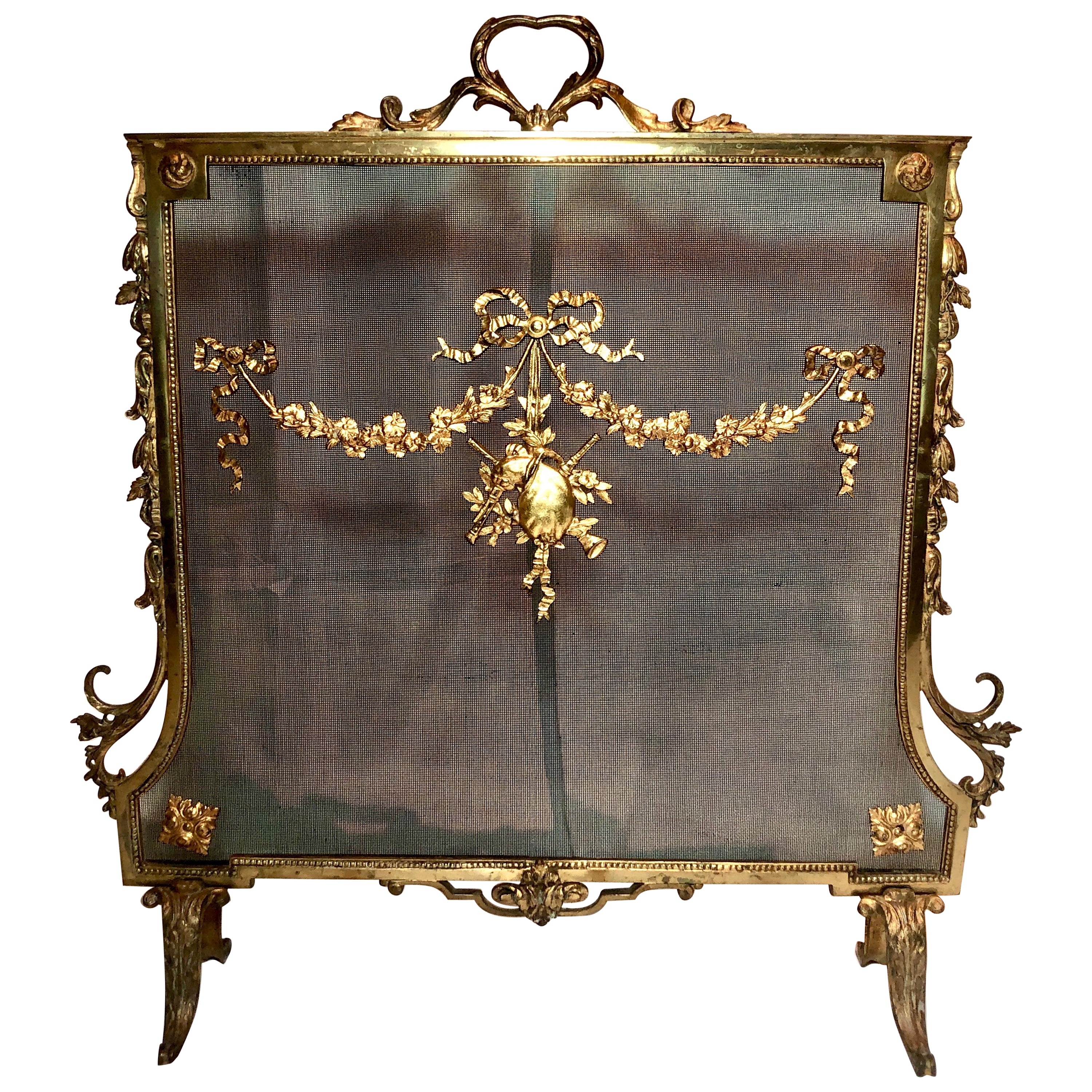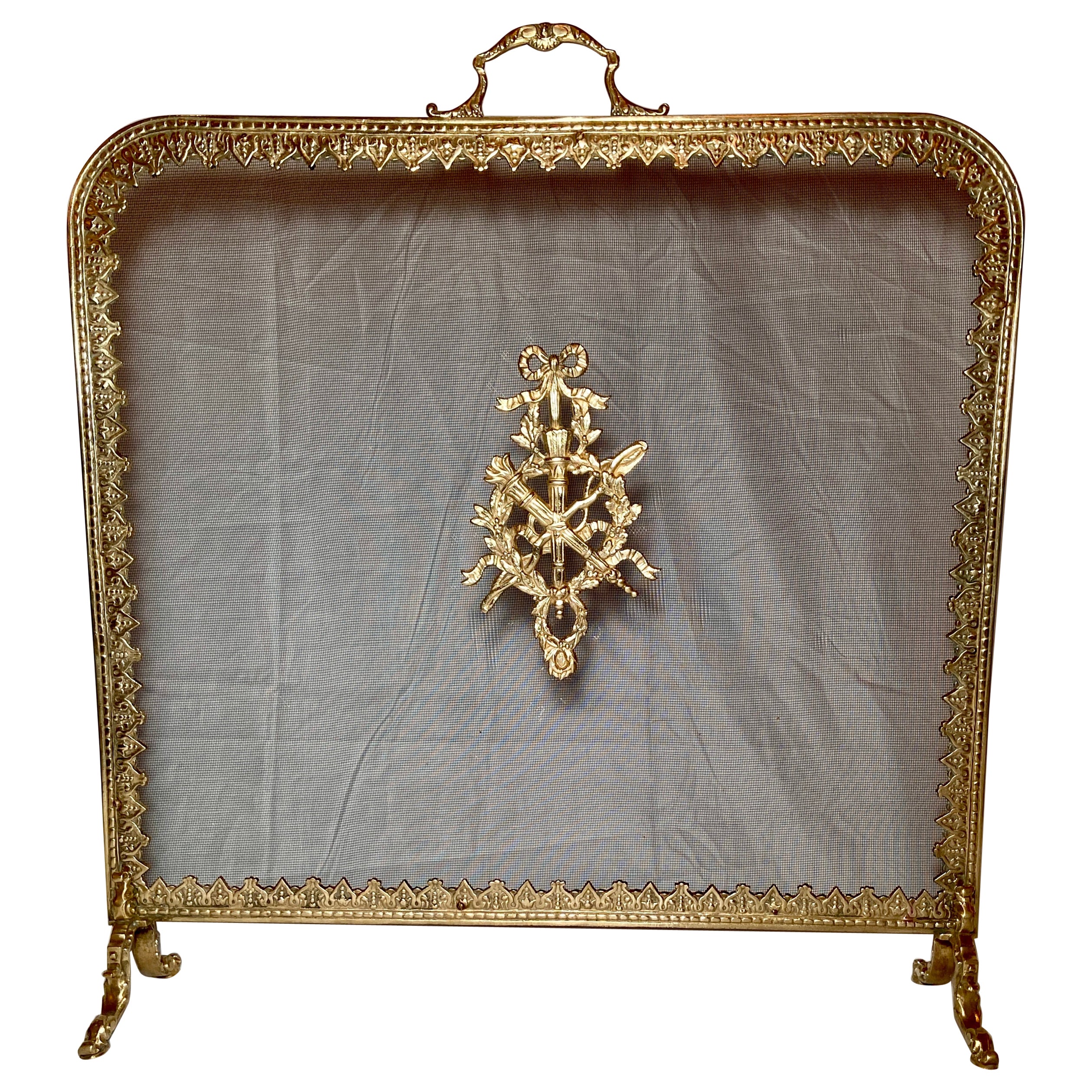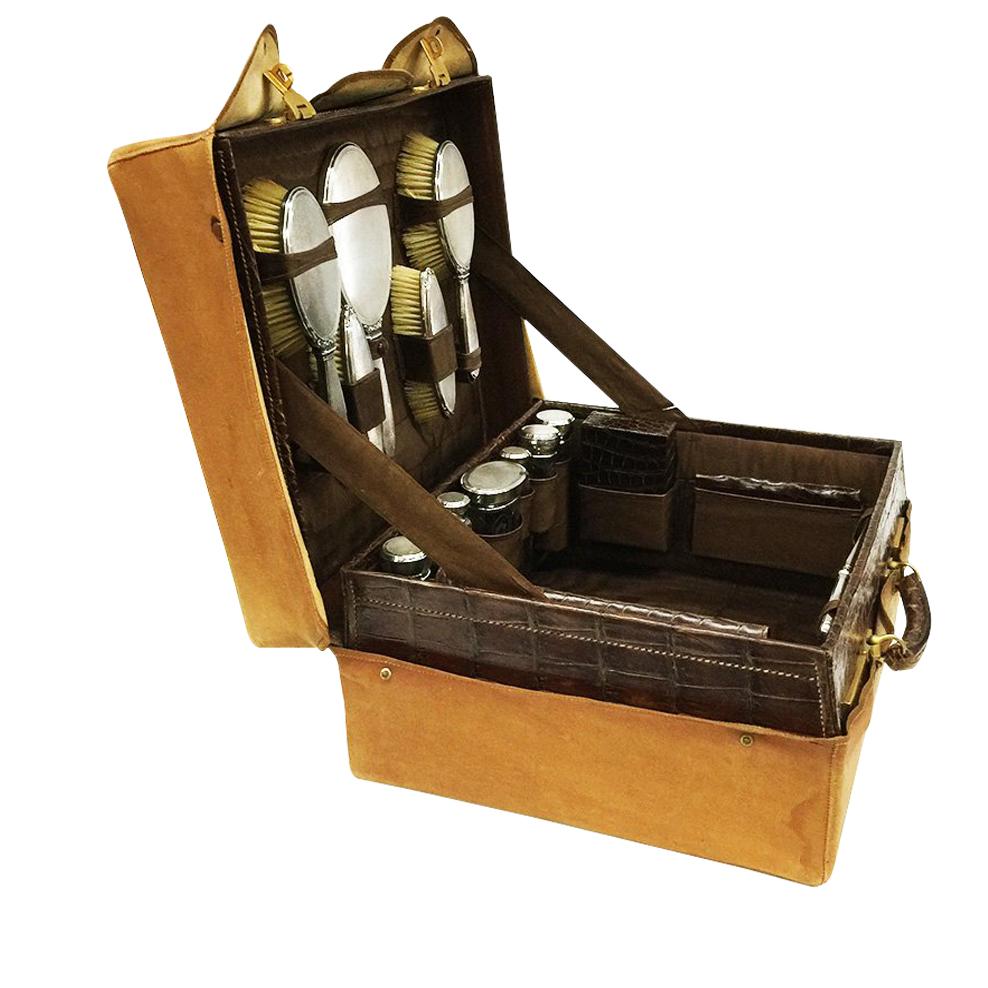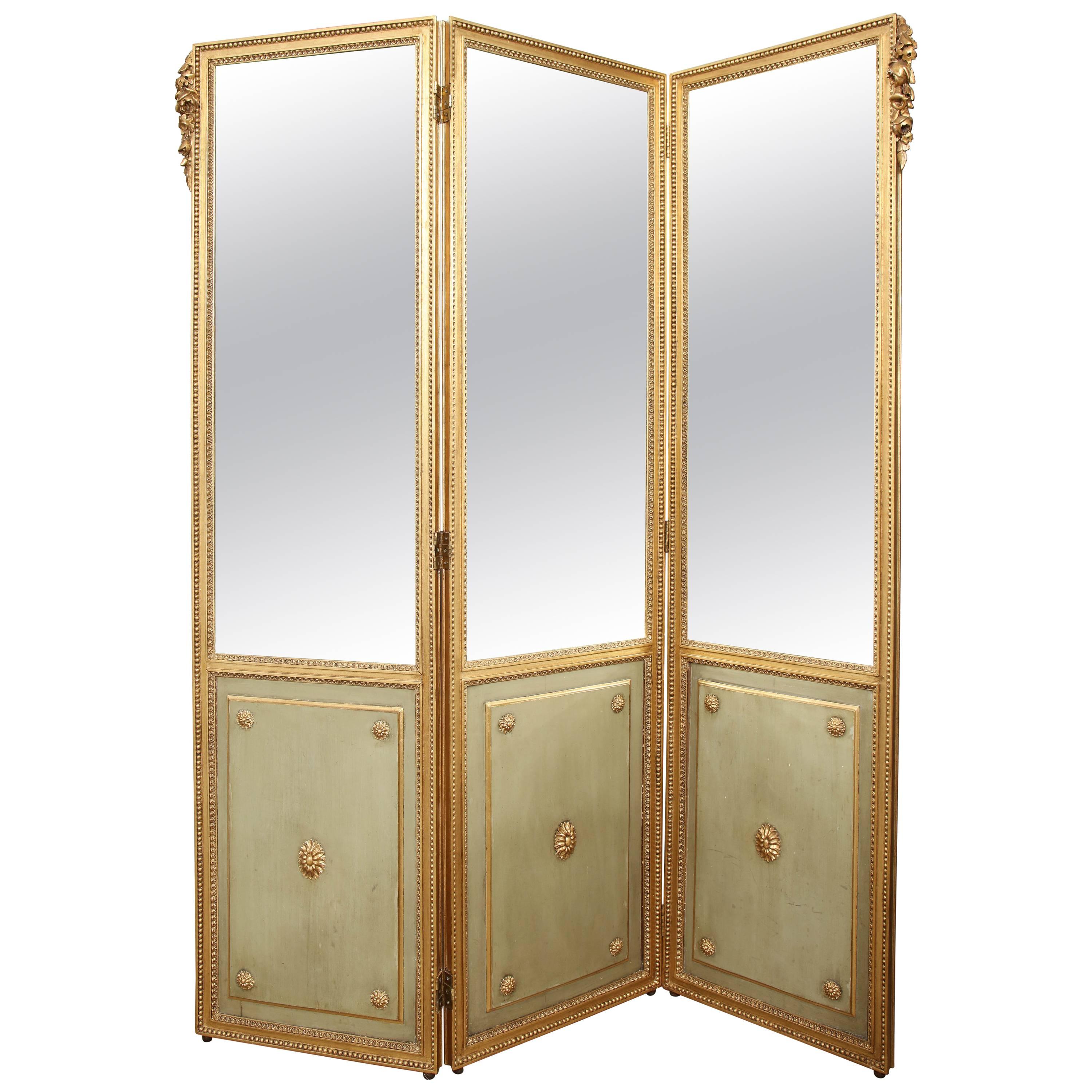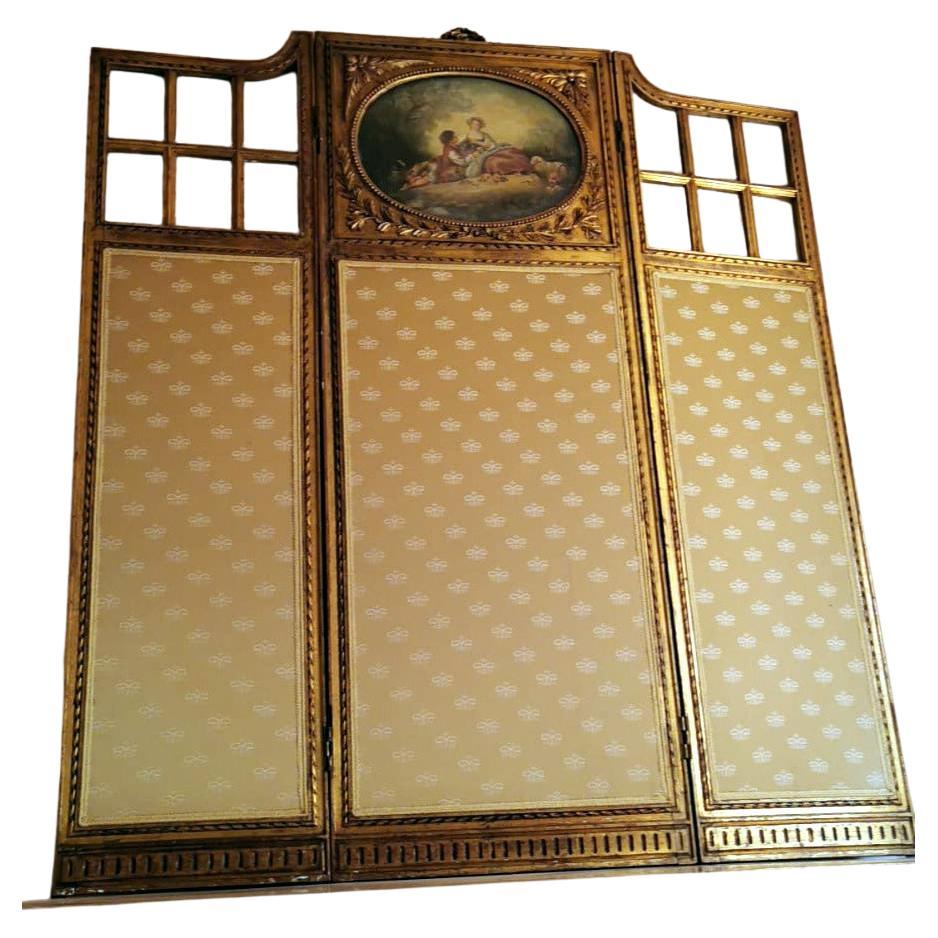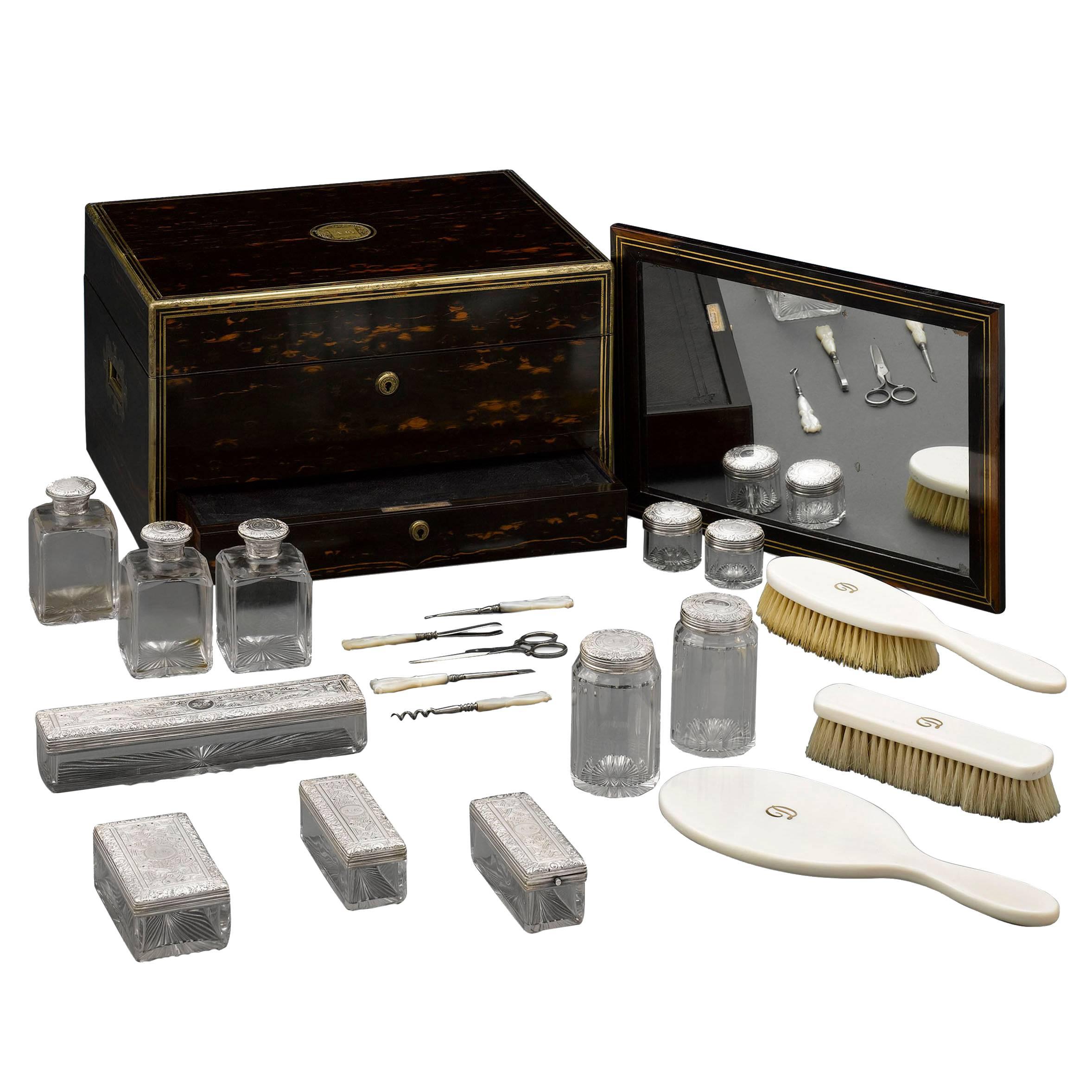Items Similar to Louis XVI Style Cut-Glass Travel Nécessaire by Boin Taburet, circa 1880
Want more images or videos?
Request additional images or videos from the seller
1 of 7
Louis XVI Style Cut-Glass Travel Nécessaire by Boin Taburet, circa 1880
About the Item
An exceptional Louis XVI style silver-gilt and cut-glass travel nécessaire by Boin Taburet.
French, circa 1880.
The lock engraved ‘BOIN TABURET 3, rue Pasquier, Paris’.
This very fine nécessaire has an oak case with its original blue silk lining fitted with a table mirror, a pair of three-light candlesticks, three pairs of cut-glass perfume bottles, a pair of hairbrushes, a small hairbrush, a pin box and a pair of rectangular clothes brushes. Each piece is engraved with the initials NM beneath a Marquis Crown and flanked by laurel branches.
Boin-Taburet was established in 1873 by the antique dealer George Boin and the jeweller Emile Taburet.
The firm was credited for the revival of interest in Louis XV style silver-work in Paris in the late 1880s, and awarded a gold medal at the Paris 1889 Exposition Universelle.
As well as producing exceptional silver and metal work the company retailed small items of furniture and decorative objects of the very highest order, made by the leading ébénistes of the day.
Emile Taburet and Georges Boin worked together until 1900 when Georges Boin associated with the silversmith Henry and created 'Boin & Henry' silversmiths.
- Creator:Boin-Taburet (Maker)
- Dimensions:Height: 7.49 in (19 cm)Width: 24.02 in (61 cm)Depth: 27.96 in (71 cm)
- Style:Louis XVI (In the Style Of)
- Materials and Techniques:
- Place of Origin:
- Period:
- Date of Manufacture:circa 1880
- Condition:
- Seller Location:Brighton, GB
- Reference Number:
About the Seller
5.0
Recognized Seller
These prestigious sellers are industry leaders and represent the highest echelon for item quality and design.
Platinum Seller
These expertly vetted sellers are 1stDibs' most experienced sellers and are rated highest by our customers.
Established in 1964
1stDibs seller since 2014
48 sales on 1stDibs
Typical response time: 1 hour
Associations
The British Antique Dealers' AssociationLAPADA - The Association of Arts & Antiques Dealers
- ShippingRetrieving quote...Ships From: Brighton, United Kingdom
- Return PolicyA return for this item may be initiated within 7 days of delivery.
More From This SellerView All
- Marquetry Inlaid Table with a Lacquer Top Retailed by Boin Taburet, circa 1880By Boin-TaburetLocated in Brighton, West SussexA fine marquetry inlaid table with a lacquer top, retailed by Boin Taburet. French, circa 1880. Stamped to the underside ‘Boin Taburet’. This attractive and unusual small...Category
Antique Late 19th Century French Louis XVI Gueridon
MaterialsWood
- Louis XVI Style Mahogany Vitrine by Alfred Louis Beurdeley, circa 1880By Maison BeurdeleyLocated in Brighton, West SussexA fine Louis XVI style gilt bronze mounted mahogany vitrine, by Alfred Louis Beurdeley. French, circa 1880. Stamped to the carcass ‘A. Beurdeley à Paris’. This fine mahogany...Category
Antique Late 19th Century French Louis XVI Vitrines
MaterialsBronze
- Louis XVI Style Mahogany Side Cabinet by Henry Dasson, French, circa 1880By Henry DassonLocated in Brighton, West SussexA very fine Louis XVI style gilt bronze mounted mahogany side cabinet with a Brèche Violette marble top, by Henry Dasson. Stamped to the top of the carcass ‘Henry Dasson’. Thi...Category
Antique Late 19th Century French Louis XVI Cabinets
MaterialsBronze
- Louis XVI Style Five-Drawer, Marble Top Chiffonier by Zwiener, circa 1880By Joseph-Emmanuel ZwienerLocated in Brighton, West SussexA fine Louis XVI style gilt bronze-mounted five drawer, marble top chiffonier by Joseph-Emmanuel Zwiener. French, circa 1880. Stamped to th...Category
Antique Late 19th Century French Louis XVI Cabinets
MaterialsMarble, Bronze
- Louis XVI Style Canapé Upholstered with Aubusson Tapestry, circa 1880By Aubusson ManufactureLocated in Brighton, West SussexA Louis XVI style Canapé, upholstered with Aubusson tapestry depicting a scene from Aesop’s Fables. French, circa 1880. The small town of Aubusson, on the River Creuse in France, had a long history of producing elaborate and costly tapestries. They were known for their elegance and delicate colouring and often depicted romantic pastoral scenes derived from artists such as Boucher; historic scenes, inspired by classical mythology; or more formalized architectural vistas. Aubusson was particularly noted for its finely balanced compositions of garlands and bouquets which became famous and sought after throughout Europe. Aesop was by tradition a labourer who was a contemporary of Croesus and Peisistratus in the mid-sixth century BC in Ancient Greece. The various collections that go under the rubric "Aesop's Fables" are still taught as moral lessons and for centuries have been influential subject matter for artistic endeavour. The Shepherd Boy and the Wolf: In a village was a young boy who had a job watching the village's sheep. Two times he called out, "Wolf! Wolf!" Each time the villagers came running to help the boy. And both times the boy just laughed at the villagers and called them names. But then the wolf really did come and start eating the sheep. The boy called, "Wolf! Wolf!" but the villagers just ignored his calls. They thought he was just trying to trick them again. The wolf took his time and had a huge meal of the entire flock of sheep. The Wolf in Sheep's Clothing: Once upon a time there was a wolf who decided to disguise himself so he could get some food without working too hard. He took a sheep's skin and hung it over his body. Then he went into the sheep pasture and pretended to graze with the sheep. He fooled everyone. Even the shepherd didn't realize she had a wolf grazing with her sheep. Soon the shepherd moved the sheep into the barn and the wolf went with them. The barn door was closed and locked and the wolf was just about ready to have a nice meal when the shepherd came back. She decided she wanted some food for her meal. She grabbed the wolf who was still disguised as a sheep and killed him for her meal. The Wolf and the Crane: One day a wolf had a bone stuck in his throat. He called to a crane and hired him for a large sum of money to put her head in his mouth and remove the bone. The crane did as she was hired to do and got the bone out and then asked to be paid. The wolf just grinned and said, "Ha! You've already been paid. I let you take your head safely out of my mouth when I could have crushed you with my powerful jaws”. The Wolf and a Mountain Goat: One day a wolf looked up and saw a mountain goat eating on a ledge high up on the side of a steep mountain. The wolf called out to the goat, "You should come down here to eat, you might fall if you stay up there. And the grass is very tender down here." But the mountain goat was too smart for the wolf and called back, "I don't think you are worried about my dinner. You are just looking for your own food!" The Wolf and the Lamb...Category
Antique Late 19th Century French Louis XVI Canapes
MaterialsTapestry, Giltwood
- Louis XVI Style Gilt-Bronze and Cut-Glass Basket Chandelier, circa 1900By Pierre GouthiereLocated in Brighton, West SussexA Louis XVI style gilt bronze and cut-glass basket chandelier with jasperware plaques, in the manner of Pierre Gouthière. French, circa 1900. The chandelier has five external ...Category
Antique Late 19th Century French Louis XVI Chandeliers and Pendants
MaterialsBronze
You May Also Like
- Antique French Louis XVI Style Bronze D' Ore Firescreen, circa 1880'sLocated in New Orleans, LAAntique French Louis XVI style bronze d' ore fire screen, Circa 1880's.Category
Antique Late 19th Century French Louis XVI Fireplace Tools and Chimney Pots
MaterialsBronze
- Antique French Louis XVI Gold Bronze Fire Screen, Circa 1880.Located in New Orleans, LAAntique French Louis XVI gold bronze fire screen, circa 1880.Category
Antique Late 19th Century French Louis XVI Fireplace Tools and Chimney Pots
MaterialsBronze
- English necessaire travel case with silver interior by William Neale & Son, 1924By William Neale & Son LtdLocated in Delft, NLEnglish necessaire travel case with silver and glass interior by William Neale & Son Ltd, Birmingham Crystal glass vials that are engraved and ...Category
20th Century British Trunks and Luggage
MaterialsCrystal, Gold Plate, Silver
- Louis XVI Style Three-Panel ScreenLocated in New York, NYScreens can add some depth and architectural interest to a room, and this one is exceptionally good looking. This three-panel painted and parcel-gilt screen is surrounded by a beaded...Category
Antique 19th Century French Louis XVI Screens and Room Dividers
MaterialsMirror, Giltwood
- Louis XVI Style French Screen Gilded Wood with Oil Painting and Ground GlassLocated in Prato, TuscanyWe kindly suggest you read the whole description, because with it we try to give you detailed technical and historical information to guarantee the authenticity of our objects. Super...Category
Early 20th Century French Louis XVI Screens and Room Dividers
MaterialsFabric, Giltwood
- Victorian Necessaire De VoyageLocated in New Orleans, LAA wonderful English coromandel travel case, or necessaire de voyage, boasts toiletries adorned with Victorian silver, cut crystal, and mother-of-p...Category
Antique 19th Century English Victorian Jewelry Boxes
MaterialsCrystal, Silver
Recently Viewed
View AllMore Ways To Browse
Small Accent Light
Pin Box
Work Table Home Office
Revival Home
Gold Accent Table
Louis Xvi Style Glass
French Style Accent Tables
Gilt Accent Table
Blue Luggage
Antique Style Accent Table
Rectangular Accent Tables
Antique French Trunks
Silver Accent Table
1880 Cut Glass
Antique Pin Box
Luggage And Travel Boxes
Louis Xv Style Silver
Antique French Accent Table
